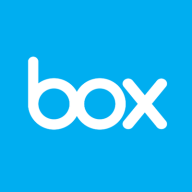


Find out what your peers are saying about Microsoft, OpenText, IBM and others in Enterprise Content Management.
There is a significant ROI from IBM FileNet because before its introduction, the company needed to do all the work manually.
People come from all over the world, and they have specialists at the other end of the world to help if needed.
IBM has a different division that provides consultation to end users, and most customers utilize consultation from IBM, which costs approximately $100k USD to $200k USD.
The consulting experts that IBM provides sometimes do not understand the tool very well.
There is a lack of detailed and timely responses, and support is not always transparent with the solutions.
The quality of Microsoft's technical support is very high.
It's also difficult sometimes to get the right information because we speak at first to a generalist and they have to go to a specialist.
I am uncertain about its effectiveness at an enterprise level, where SharePoint might be preferred.
The bigger products like IBM FileNet can handle billions of documents and thousands of users.
With Kubernetes, we can simply add instances of the worker, CPU, or memory without needing deployment.
We have about 80 transactional systems connected to IBM FileNet.
Making it easy to scale from a load-balancing and infrastructure perspective.
SharePoint is massively scalable and I would rate it as 8.5 out of ten.
SharePoint allows multiple teams to work at the same time, making it adaptable for large data volumes.
Box was very stable and did not have any latency issues.
FileNet was restricted to DB2's enterprise edition instead of the standard edition, causing complications.
In terms of stability, we haven't experienced any big technical issues or downtime with IBM FileNet.
The stability of SharePoint is high; it is quite stable and resilient.
Everything runs smoothly, and I have no problems with its stability.
SharePoint is a stable product.
Collaborative editing was challenging if multiple people were in a document at once.
Ease of use with IBM FileNet is a disadvantage of this tool. It is complex and hard to use.
The response time and resolution of issues by technical support need improvement.
From the beginning, we cannot use a REST API; we have to use the IBM FileNet native API, which is quite outdated.
Microsoft forces users to upgrade their license to access proper auditing information, which is essential and should be included in any license.
The rights management aspect can be particularly challenging, which may affect the overall user-friendliness of the product.
Expansion of scalability is needed, specifically the threshold limits for site items should be increased beyond the current 5,000 items.
The product has become more expensive and requires significant investment for enterprise solutions.
The price is high, with yearly subscriptions increasing day by day.
FileNet and similar enterprise-level tools require substantial costs, starting in the millions.
Unlike Drupal, all necessary applications are included in the Microsoft license, making it cost-effective.
Microsoft offers bundled pricing for Office, SharePoint, and Exchange, making it cost-effective.
Enterprise licensing is generally cost-effective compared to individual purchases.
Box had a very easy-to-use search feature and a good user interface on its website, which was faster and better than SharePoint.
There is a significant ROI from IBM FileNet because before its introduction, the company needed to do all the work manually.
The main features we find impactful are the workflow and document management along with FileNet file stores.
At this level, companies don't buy a ready-made solution.
Additionally, SharePoint acts as a version control system, allowing easy recovery of past document versions.
Its rights management capabilities and ability to restrict access to certain people are also very useful.
The most valuable feature of SharePoint is the ability to collaborate on documents without having multiple versions.
| Product | Market Share (%) |
|---|---|
| SharePoint | 15.0% |
| IBM FileNet | 8.2% |
| Box | 4.3% |
| Other | 72.5% |



| Company Size | Count |
|---|---|
| Small Business | 16 |
| Midsize Enterprise | 9 |
| Large Enterprise | 27 |
| Company Size | Count |
|---|---|
| Small Business | 31 |
| Midsize Enterprise | 12 |
| Large Enterprise | 74 |
| Company Size | Count |
|---|---|
| Small Business | 79 |
| Midsize Enterprise | 37 |
| Large Enterprise | 80 |
Box is a Modern Content Management Platform for companies of all sizes and industries. The difference that Box brings is that it offers the security and controls admins need with the sharing and collaboration capabilities end users want. Box has made it easier for people to securely share ideas, collaborate and get work done faster. Today, more than 62,000 businesses, including 59% of the Fortune 500, trust Box to manage content in the cloud.
The Box platform provides HIPAA, FINRA, FedRAMP, and many other compliances to go with granular access permissions and advanced security capabilities.
By using Box you can sync, share, and collaborate on all types of files, anywhere, on any device - but that's just the beginning. You can choose where to store your data, to manage your own encryption keys, and set workflows to automate content-based processes. You can also assign custom metadata tags to content, watermark sensitive content, and set file retention or legal hold policies.
Box has deep, native integrations with Microsoft Office and Outlook, Google Apps for Work, Salesforce, Netsuite, Docusign, Adobe, and many other best-of-breed solutions you may already be using.
IBM FileNet is a leading IBM enterprise content management product family. IBM FileNet is one of the ECM solutions that can change the way a company does business by enabling users to capture, activate, socialize, analyze, and govern content throughout its lifecycle.
There are many IBM FileNet products available, all of which are integrated and based on the FileNet P8 Platform.
SharePoint is a Microsoft-based platform for building web applications. It covers a widerange of capabilities and while it is appropriate for experienced webdevelopers, even non-technical minded users can easily navigate through thesystem and execute functions such as collaborating data, managing documents andfiles, creating websites, managing social networking solutions, and automatingworkflow.
Major areas that SharePoint deals with are websites,communities, content, search, insights, and composites. The purpose is to give usersthe ability to create or develop these key business components on their owneven without technical knowledge of, for example, how to build a website or howto integrate coding. Configuring SharePoint into a business's system is meantto cut out all of the complicated steps, and pave the way for easierimplementation all around.